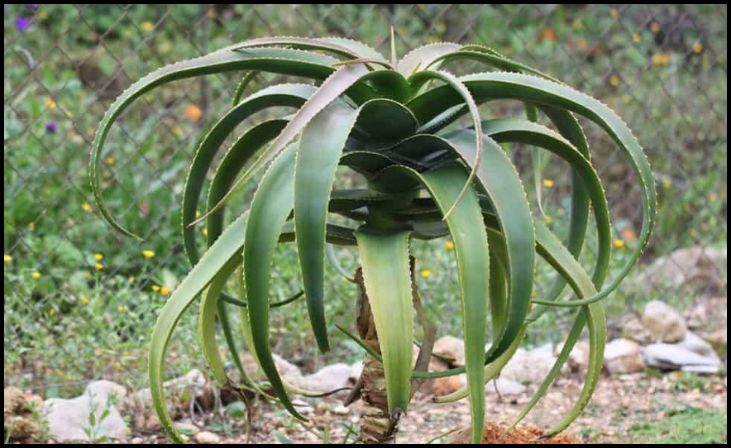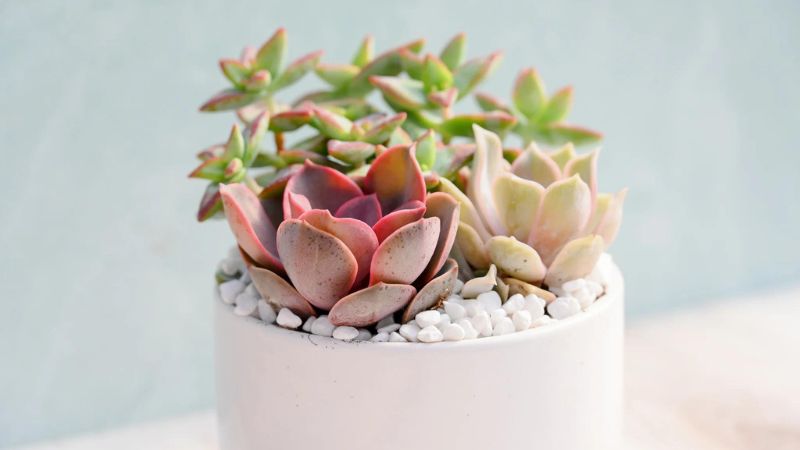Succulents have captured the hearts of plant enthusiasts around the globe with their unique shapes, vibrant colors, and low maintenance needs. While many common varieties are found in households and gardens, there exists a fascinating world of rare succulents that few have the opportunity to encounter. These extraordinary plants, often found in remote or challenging environments, exhibit remarkable adaptations and stunning aesthetics that set them apart from more familiar species. In this blog, we’ll explore ten of the rarest succulents in the world, delving into their distinctive characteristics, natural habitats, and the reasons behind their scarcity. Whether you’re a seasoned succulent collector or simply a lover of botanical curiosities, these rare treasures will captivate your imagination and inspire a deeper appreciation for the diversity of the plant kingdom.
1. Sand Dollar Cactus (Astrophytum asterias)

The Sand Dollar Cactus, scientifically known as Astrophytum asterias, is a unique, spineless succulent native to Texas, USA, and parts of Mexico. It is highly sought after by succulent enthusiasts due to its distinctive flat, disc-like shape resembling a sand dollar, and its beautiful, bright yellow flowers that bloom from its center. Unfortunately, the survival of the Sand Dollar Cactus is under severe threat due to illegal harvesting and habitat destruction. These activities have drastically reduced its population, leaving only about 2,000 individual plants remaining in the wild. Conservation efforts are essential to protect this remarkable species and ensure its survival for future generations.
2. Salão (Aeonium gorgoneum)
The Salão, or Aeonium gorgoneum, is a rare succulent found exclusively in the Cape Verde Islands. This plant is notable for its rosette-shaped leaves and is often used in traditional medicine by local populations. However, overharvesting for medicinal purposes and habitat loss have led to a significant decline in its numbers. Currently, there are fewer than 1,000 plants left in the wild. Conservation efforts, including habitat protection and cultivation programs, are crucial to prevent the extinction of this unique species and to maintain the biodiversity of the Cape Verde Islands.
3. Pelotilla de Chinamada (Monanthes wildpretii)
The Pelotilla de Chinamada, or Monanthes wildpretii, is a tiny succulent endemic to Tenerife in the Canary Islands. This plant is highly prized for its delicate, rosette-forming leaves and its ability to thrive in rocky crevices. However, it faces severe threats from habitat degradation and illegal collection by plant enthusiasts. With fewer than 600 individuals remaining in the wild, urgent conservation actions are necessary to protect this species. Efforts include habitat restoration, legal protection, and public awareness campaigns to reduce illegal collecting and ensure the survival of the Pelotilla de Chinamada.
4. Rose Pincushion Cactus (Mammillaria zeilmanniana)
The Rose Pincushion Cactus, or Mammillaria zeilmanniana, is a charming cactus known for its vibrant pink flowers that bloom profusely, creating a stunning display. Endemic to San Miguel de Allende in Mexico, this cactus is highly endangered due to habitat destruction and illegal collection. With less than 250 wild individuals left, the survival of the Rose Pincushion Cactus is precarious. Conservation efforts, including habitat protection and cultivation in botanical gardens, are vital to preserve this species. Educating the public about the importance of protecting wild populations can also help reduce illegal collecting pressures.
5. Vahondrandra (Aloe helenae)

The Vahondrandra, or Aloe helenae, is a rare succulent endemic to southern Madagascar. This striking plant features tall, branching stems and rosettes of blue-green leaves, making it a sought-after specimen for succulent collectors. However, the Vahondrandra faces significant threats from habitat destruction caused by agricultural expansion and mining activities. With only 200-500 individuals remaining in the wild, conservation efforts are crucial for its preservation. Initiatives include habitat restoration, legal protection, and cultivation programs to ensure that this unique species does not disappear from its native habitat.
6. Estevesia alex-bragae
Estevesia alex-bragae is a rare flowering cactus found in Goiás, Brazil. This plant is notable for its beautiful, tubular flowers and compact growth habit. Unfortunately, Estevesia alex-bragae is endangered due to habitat loss from agricultural activities and urbanization. With less than 200 individuals remaining, the species is at high risk of extinction. Urgent conservation actions are needed, including habitat protection, cultivation in botanical gardens, and research on its ecology and reproduction. These efforts are essential to prevent the extinction of this unique cactus and to preserve its genetic diversity.
7. Giant Quiver Tree (Aloidendron pillansii)
The Giant Quiver Tree, or Aloidendron pillansii, is a majestic succulent tree found in South Africa and Namibia. It is characterized by its towering height, thick, trunk-like stems, and clusters of yellow flowers that bloom at the tips of its branches. This unique tree faces threats from habitat loss due to climate change and illegal collecting for the horticultural trade. With fewer than 200 individuals left in the wild, conservation measures are essential to protect its dwindling population. Efforts include habitat preservation, legal protection, and research on its reproductive biology to enhance conservation strategies.
8. Aichryson dumosum
Aichryson dumosum is a rare succulent endemic to the Madeira Archipelago in Portugal. This plant is characterized by its small, rosette-forming leaves and delicate yellow flowers. It faces significant threats from invasive species, habitat degradation, and climate change. With only 50-250 individuals remaining, urgent conservation actions are required to prevent its extinction. Efforts include habitat restoration, control of invasive species, and ex-situ conservation programs in botanical gardens. Raising public awareness about the importance of protecting this rare species is also crucial for its survival.
9. Parodia rechensis
Parodia rechensis is a critically endangered cactus found in Rio Grande do Sul, Brazil. This succulent is known for its beautiful, barrel-shaped body and bright yellow flowers. However, it faces severe threats from habitat loss due to agricultural expansion and the difficulties associated with its cultivation. With only about 70 plants left in the wild, urgent conservation efforts are necessary to ensure its survival. Initiatives include habitat protection, cultivation in botanical gardens, and research on its propagation techniques. These measures are essential to preserve this unique cactus and its habitat.
10. Discocactus subterraneo-proliferans

The Discocactus subterraneo-proliferans is an exceptionally rare succulent that may already be extinct in the wild in Britania, Brazil. This plant is known for its small, spherical shape and fragrant, night-blooming flowers. With fewer than 50 individuals in private collections worldwide, urgent conservation actions are needed to preserve its genetic diversity and prevent its extinction. Efforts include habitat restoration, legal protection, and cultivation programs in botanical gardens. Raising awareness about the importance of conserving this rare species can also help garner support for its protection and preservation.
These rare succulents are not only fascinating for their unique characteristics and adaptations but also highlight the importance of conservation efforts to protect the planet’s biodiversity. By supporting conservation initiatives and making responsible choices as plant enthusiasts, we can help ensure the survival of these extraordinary plants for future generations to appreciate and enjoy.

